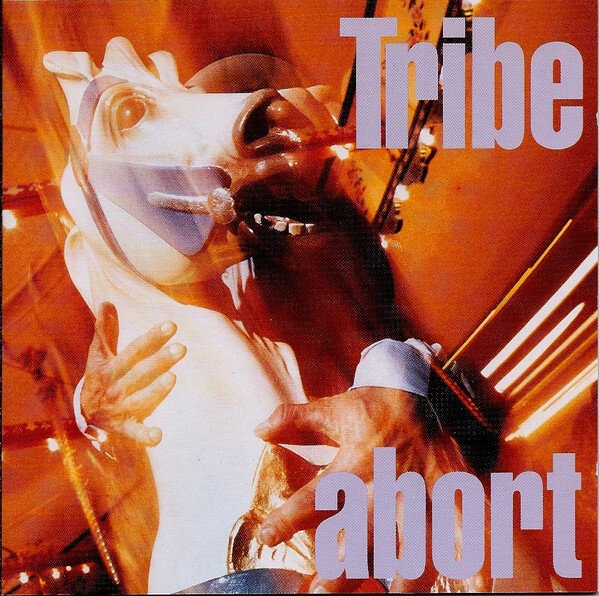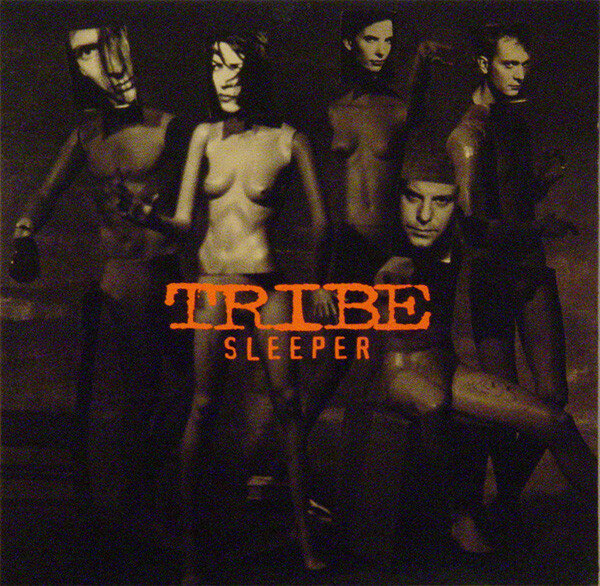Supercollider: A Retrospective of Tribe
Click on the YouTube icon to listen to the playlist as you read along.
I don’t often catch the opening acts for concerts, and that was especially true when I was younger. But when I went to see the Psychedelic Furs in December 1991, it was going to be the first time seeing them in seven years and I was falling for them all over again after their fantastic World Outside album. I arrived early, and thus saw the opening act, Tribe. The Furs were good that night, but I went home thrilled because of Tribe’s performance. It was powerful, energetic, catchy, and entertaining start to finish. I vividly remember being blown away at several moments during the show. It put me on to this band that, unfortunately, failed to build the same excitement for others that they had for me.
Tribe (clockwise from top left): David Penzo; Greg LoPiccolo; Eric Brosius; Terri Brosius; and Janet LaValley
Tribe came out of the late 1980s scene Boston scene that produced The Pixies, Throwing Muses and Belly (technically from Rhode Island), Buffalo Tom, The Breeders, The Lemonheads, Blake Babies, The 360s, and The Mighty Mighty Bosstones. Boston, riddled with universities and colleges, has always featured a fervent modern rock scene, and during that time Tribe was one of the most popular in the city. They were a quintet featuring two females, singer Janet LaValley and principal songwriter and keyboardist Terri Brosius, drummer David Penzo, guitarist Eric Brosius, and bassist Greg LoPiccolo. They built a strong local following with their electrifying live act, being finalists in 1988 for radio station WBCN’s battle of the bands, Rock ‘n’ Roll Rumble, and LaValley was selected by the Boston Phoenix three years in a row as best local female singer.
Their first release was an indie, four-song demo EP in 1987, Abort, which got them local airplay with the title track, a wonderful, dirgy, sonic assault of a song that was quite unlike anything else around, then or since. They then self-released an album in March 1990, Here at the Home, and issued the single, “Jakpot.” It had the four songs from Abort plus six new songs. The strength of their local following landed them a major label signing to Warner Bros., which released the LP, Abort, in August 1991, which was the album I saw them touring that December.
Abort was predominantly re-recordings of the songs from Here at the Home, with only two songs from the original album not included on Abort. The new album added four new tracks, resulting in a near perfect package of twelve punchy, poppy, infectious tunes over forty-five minutes. Three singles were issued, “Easter Dinner,” “Payphone,” and “Joyride (I Saw the Film).” Thanks to the likes of fellow locals, The Pixies, the slow/fast dynamic mixed with powerful guitars and hooky melodies was becoming the rage, paving the way for the west coast grunge explosion in the fall of ’91. Tribe had an uncanny ability to play on this theme, but rather than frequent or abrupt changes in pace, they employed a sublime mix of pop melodies with a building, wall-of-sound force that would provide thrilling moments of power or incredible finishing stretches, none better than on the song, “Outside.” It was this feature of their music that made their live shows so enthralling.
The band released their second LP, Sleeper, in 1993. Such as it was for the band, myself and many others missed this. I didn’t discover it until the 2000s, and over the years it has grown to me to rival Abort in consistent excellence. Perhaps a problem for the band was all their songs were of a consistent quality – any song on their LPs could have been a single – but none broke through to distinguish themselves as true hit material. The album did produce two singles, “Supercollider,” and “Red Rover,” but despite television appearances and regular touring, their sound just didn’t find an audience outside their local fan base. Tribe never charted and Warners dropped them after Sleeper. After a change in drummers for their tour, the band decided in 1994 things just weren’t going to happen and they broke up.
Tribe is the consummate example of the modern rock sound that is steeped in excellence yet can’t drive through the wall of popular consciousness. Their edgy sound, dramatic turns, mix of grungy rock with new wave-pop keyboards, and LaValley’s deep, melodious voice and goth look, were just enough to turn fans of any aspects of those styles away. It’s unfortunate that, given the opportunities for inventiveness, bands that straddle genres too often slip through the cracks. For me, it was a wondrous mix of so many good elements, and Tribe remains one of my most often played bands, and I encourage everyone to make them theirs also.
The Playlist - song \ album (year)
Lemmings \ Here at the Home (1990)
Easter Dinner \ Abort (1991)
Abort \ Abort (1991)
Joyride (I Saw the Film) \ Abort (1991)
Jakpot \ Abort (1991)
Outside \ Abort (1991)
Miracle of Sound \ Sleeper (193)
Crawl \ Sleeper (193)
Supercollider \ Sleeper (193)
Nevermind \ Sleeper (193)
Sleeper \ Sleeper (193)












